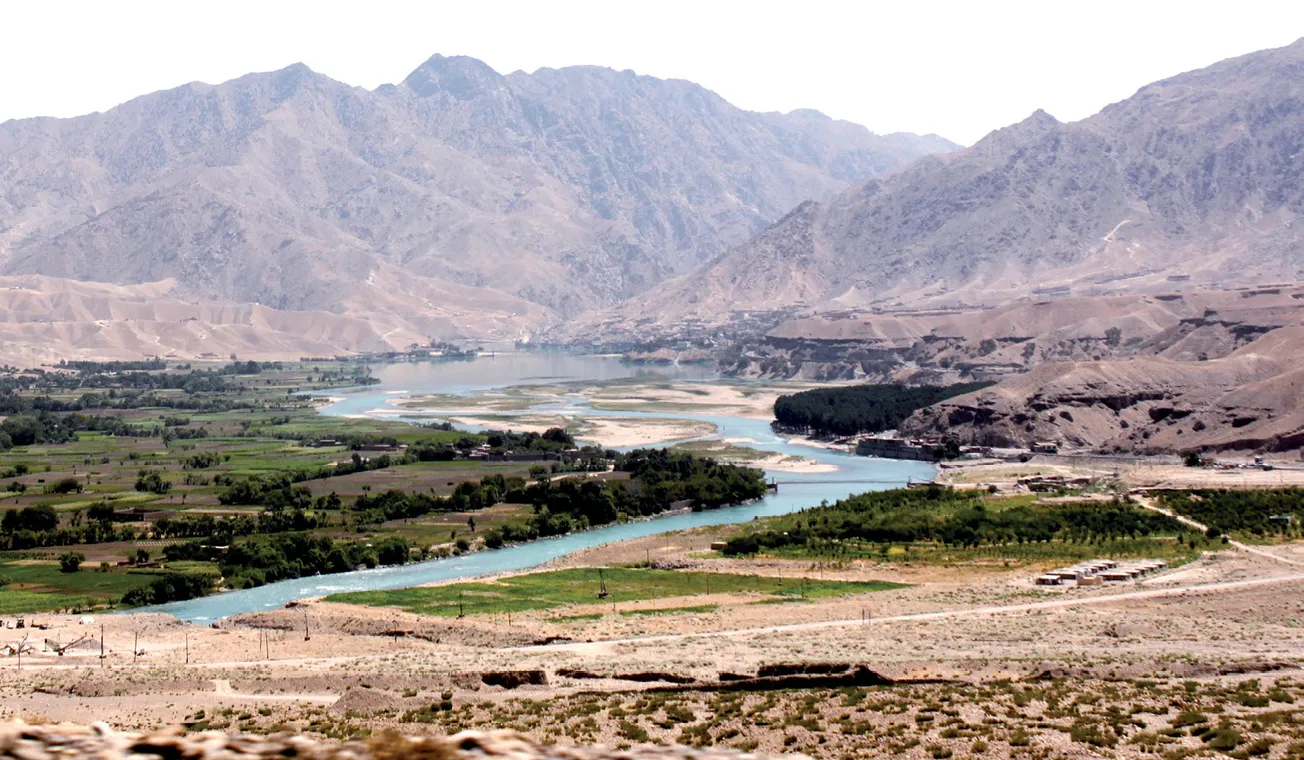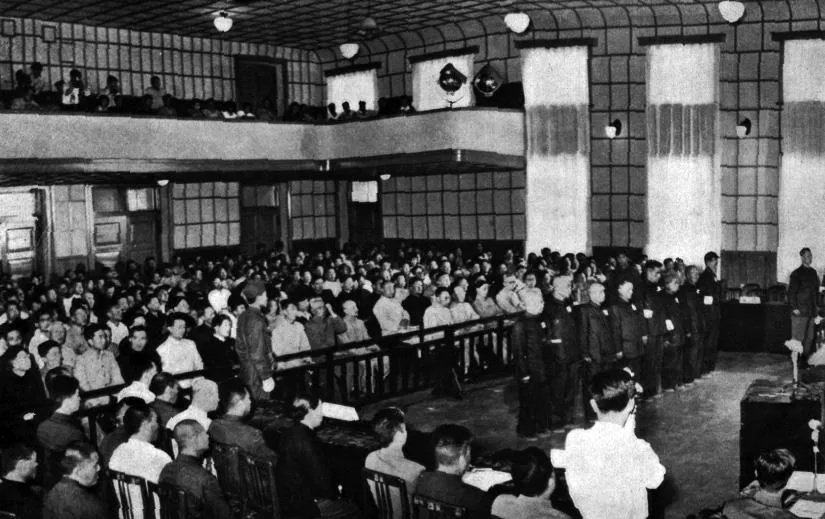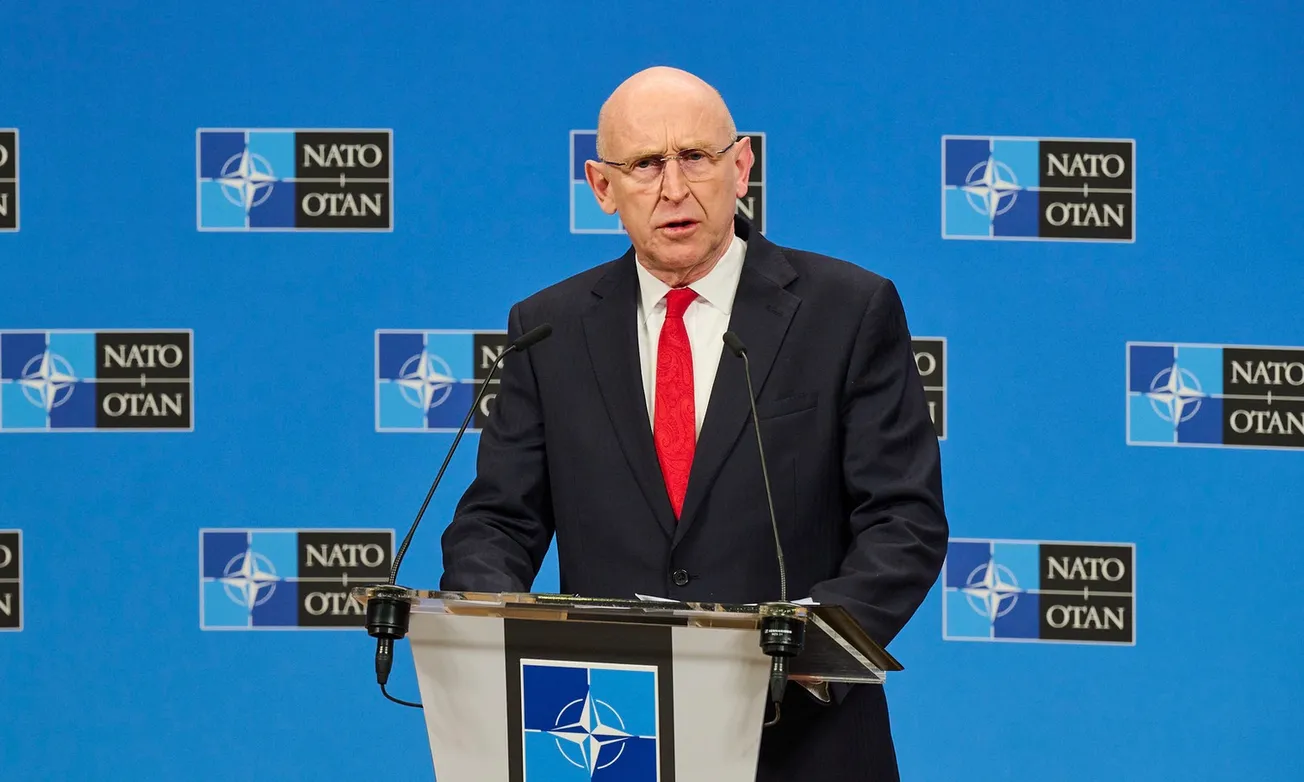This article is based on excerpts from a Schiller Institute policy document, released for private circulation July 2024, titled, “Afghanistan 2024 Outlook: Sovereignty and Security in the Era of Eurasian Integration,” by Marcia Merry Baker and Karel Vereycken.
Aug. 21—August 2024 marks the third year of Afghanistan’s independence from foreign occupation, and also the 105th year of independence from Britain. At the many commemorations, parades and celebrations, speakers repeatedly expressed commitment to economically strengthen and defend their homeland.
On Aug. 18, at an event commemorating the anniversary of freedom from Britain, Deputy Prime Minister for Economic Affairs Mullah Abdul Ghani Baradar expressed a special angle, saying his country can learn from the success of other nations, in pursuing development and independence:
Instead of trying new experiences, we should implement what other nations have tested and are now reaping the benefits of. We should observe what countries in the region and the world have done, how they have secured their defense, and where and how they have maintained it under the close scrutiny of their enemies.
There are three outstanding features of the situation in the nation, the region, and at large across the Eurasian continent:
1. The government of the Islamic Emirate of Afghanistan (IEA) has initiated critical economic projects and programs in the direction of the needed overall, integrated national development;
2. The destructive environment of Western sanctions, trade and aid bans continues, in addition to the withholding of over $9.5 billion of Afghan central bank assets, worsening the plight of millions of Afghans already suffering from the legacy of 40 years of economic and literal warfare;
3. There is a strong dynamic for coordinated economic advancement across Eurasia, which is very positive for Afghanistan. This dynamic is led by nations of the BRICS, Shanghai Cooperation Organization, Eurasian Economic Union, and the Organization of Turkic States, in collaboration with many others, especially China’s Belt and Road Initiative (BRI).
IEA Acting Minister of Labor and Social Affairs Abdul Amari referred directly to this last point in discussing what he called “the geographical importance of Afghanistan in the important forums” promoting Eurasian development, when he participated in the June 5-8, 2024, St. Petersburg International Economic Forum (SPIEF) in Russia. Amari spoke on a panel titled, “The Greater Eurasian Partnership as a New Pole of Growth: Potential and Prospects.” A fellow participant was Sergei Glazyev, Minister for the Integration and Macroeconomic Department of the Eurasian Economic Commission, and strong advocate for Eurasian development. The “Greater Eurasian Partnership” was first announced by Russian President Vladimir Putin in 2015, and recently reiterated.
The IEA government reports that it has an economic master plan under preparation. The great challenge is to proceed from an overview of how to coherently transform the economy, while at the same time dealing with the pressing demand to provide relief for humanitarian and disaster emergency needs.
Toward this economic plan, an important conference was held Nov. 6-8, 2023, in Kabul, titled, “Operation Ibn Sina: The Coming Afghan Economic Miracle,” sponsored by the Ibn Sina Research and Development Center, in which the government participated, and the Schiller Institute attended, among the 600 experts and guests. At that time, speakers from many ministries all stressed the same point, that Afghanistan is committed to undertake priority development projects entirely on its own if necessary, as a matter of sovereignty and responsibility to its people and future.
It must be noted that at the very same time as this Ibn Sina dialogue in Kabul took place toward an “Economic Miracle,” an international counter operation was underway, led by major Western nations, through and alongside the United Nations. A “roadmap” was issued at the UN on what the IEA should do for “normalization” over the coming years, commissioned by Secretary General António Guterres. The 21-page directive is premised on the idea that a new special UN official should be appointed—like a viceroy—to steer Afghanistan for the next several years, to what may or may not eventuate as national independence. In fact, the roadmap terminology refers to the Taliban, which is currently governing Afghanistan, as only a current “DFA”—de facto authority—but not as a real government. The UN Security Council in December 2023 ratified this roadmap/viceroy plan, with China and Russia abstaining.
The IEA stated its opposition to being a UN protectorate from the outset. On Nov. 17, 2023, IEA spokesman Zabihullah Mujahid said, “There are various countries with various types of government in the world. Afghanistan has a government of its own and no one should put these illegitimate conditions on the Afghans. If they do so, we can still live without being recognized by them.”
I. Kabul Initiatives and Context
Under the banner of independence and self-reliance, the government has launched multiple critical initiatives, several of which involve relations with neighboring and other Eurasian nations, through commercial, humanitarian, diplomatic, cultural, scientific and other respects. These are a few of the priority initiatives (not a comprehensive list):
Qosh Tepa Canal: This project, begun March 2022, is now in phase two of construction of the 285 km channel in northern Afghanistan. Its intended 550,000 hectares of irrigated land will allow the nation to become food self-sufficient in wheat, its basic staple.
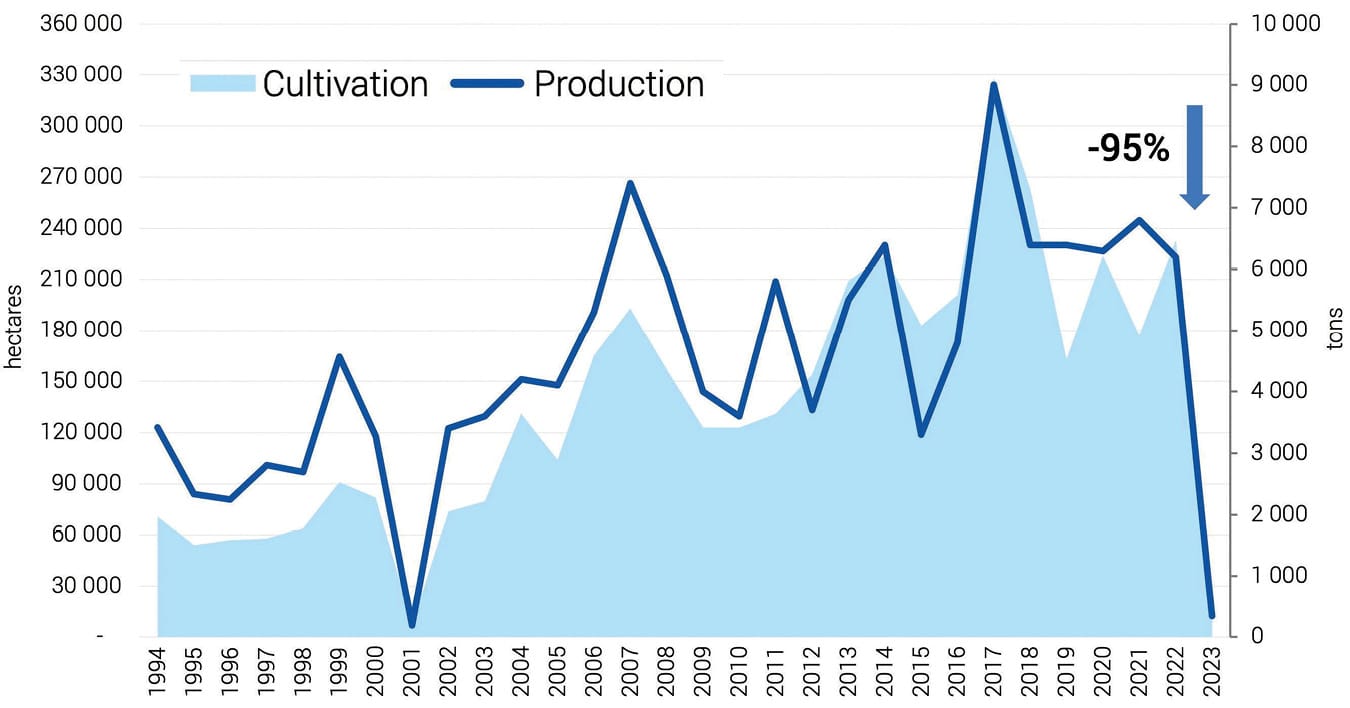
Ban on opium poppy cultivation: The ban issued in April 2022 by the Taliban has seen land switched over to the cultivation of wheat and other crops, contributing directly to the rise in national wheat harvests in 2023 and 2024. The Ministry of Agriculture, Irrigation and Livestock (MAIL) on July 8, announced it has a five-year support plan for the farmers who are no longer growing opium poppy, and has been providing what resources it can for this since 2022. Much more is needed. The government has appealed for international support.
Prof. Pino Arlacchi, former Director of the UN Office of Drugs and Crime (1997-2002), who worked with the Taliban in 1999-2002 to successfully eliminate opium poppy cultivation in 2001, has sounded the call for international resources.
Oil and gas development: The 2023 commercial agreement with Chinese interests has resulted in exports and domestic use of crude oil from the Amu Darya Basin in northern Afghanistan. China’s Xinjiang Central Asia Petroleum and Gas Co. (CAPEIC) has a 25-year contract. Other drilling projects have started.
Salang Tunnel rehabilitation: In 2023, the two-year reconstruction of the Salang Tunnel was begun, led by an Afghan-Russian company. This tunnel, originally built by the USSR in the 1960s, is a vital connection between northern and southern Afghanistan.

Minerals extraction: Kabul made new contracts in 2023 with companies from China, Turkey, Iran, Qatar, and the UK for extraction and processing of parts of the nation’s vast wealth of iron, lead, zinc, gold, lithium, and other minerals, as well as gemstones such as emeralds and rubies. China’s Metallurgical Group Corp. has begun work at Mes Aynak, the world’s second largest known copper deposit. Underground extraction methods are to protect the site’s unique cultural heritage.
Continued Western Hostilities
The U.S., European Union, and UN sanctions on Afghan individuals and entities remain in force. The European and U.S. banks and agencies retain the $9.5 billion of Afghan assets they seized unilaterally in August 2021. Many major world nations are calling for ending this economic warfare. For example, at the June 21, 2024, UN Security Council session on the “Situation of Afghanistan,” diplomats from Russia, India, Guyana and other nations spoke out to restore these funds to Afghanistan.
This call was then repeated at the June 30-July 1 United Nations Doha meeting of special national envoys to Afghanistan. IEA government spokesman, Zabihullah Mujahid, who led the IEA delegation to the Doha meeting, thanked the nations at a follow-up press conference, naming Pakistan, Iran and others, which are supporting Kabul’s request to access its blocked funds.
Besides imposing sanctions, Western nations have cut food and humanitarian aid to Afghanistan—aid which is currently critical in helping the nation go from emergency humanitarian conditions, to a fully functioning economy.
Moreover, Washington and London are pressuring donor nations to not give any support to Afghan farmers working to replace opium poppy cultivation with alternative crops. The evil Western excuse is that poor farmers must grow poppy to survive, and that “climate change” means that alternative crops (wheat, pomegranate, grapes, etc.) can no longer tolerate Afghan conditions! See, for example, William Byrd, at the U.S. Institute of Peace, chartered by the U.S. Congress (in 1984), his June 20, 2024, article, “As Taliban Poppy Ban Continues, Afghan Poverty Deepens.”
This evil logic was presented in a July 30, 2024, report to the U.S. Congress from SIGAR, the Special Inspector General for Afghanistan Reconstruction—a U.S. agency still in operation, despite the independence of Afghanistan. The 28-page SIGAR report is titled, “The Taliban Drug Ban,” promoting the line that it will and should fail.
The Context of Eurasian Development
As the development drive proceeds dramatically in many parts of Eurasia, representatives of the IEA have been participating in planning and trade events associated with economic advancement, especially in the last year. In October 2023 an IEA delegation led by acting Commerce Minister Haji Nooruddin Azizi participated in the Third Belt and Road Forum in Beijing. The IEA has also joined the BRI. (In 2023, China became the first nation to appoint a new ambassador to Afghanistan.)
This year the IEA, besides participating in SPIEF 2024, as referenced above, sent Kabul officials to participate in the XV Russia-Islamic World KazanForum from May 14-19 in Tatarstan.
The July 3-4 Shanghai Cooperation Organization (SCO) Summit in Astana, Kazakhstan did not have an IEA delegation in attendance, but there was an SCO joint declaration on Afghanistan. The text was premised on the common interest of Afghanistan and all Eurasian nations. This represented the view of the 10 SCO member nations, plus 16 more observer and guest nations. UN Secretary General António Guterres stressed that security will come through mutually-beneficial development.
The dynamic for Eurasian development is exceptionally powerful at present, with China currently holding the rotating annual chairmanship of the SCO, while Russia holds the BRICS chairmanship for 2024. The BRICS Summit will take place in October in Kazan.
President Xi Jinping, in his Astana address July 4, 2024, to the SCO-Plus meeting, said:
Afghanistan is indispensable for the security in the region. We need to make the best use of the mechanism of coordination and cooperation among Afghanistan’s neighbors and other platforms to increase humanitarian support to Afghanistan, and encourage Afghanistan to establish a broad-based and inclusive political structure and embark on a path of peace and reconstruction.
II. The Afghanistan Economy, from the Development Perspective
Afghanistan has over 43 million people, with millions more having moved abroad because of the current and past circumstances. As a result of the legacy of non-infrastructure development and damage over decades of foreign occupation, the per capita volumes of many economic factors are low, including: electricity, clean water, crops, livestock, paved roads, railroads, steel, chemicals, cement, hospital beds, medics, teachers, and all such basic ratios that characterize a modern, productive economy.
Agriculture involves 80% of the population, directly or indirectly, yet the nation is still food-import dependent. Most of the farm families produce only for their own subsistence. Some 14 million people need food aid, and nearly 24 million need humanitarian assistance overall. The vulnerability to natural disasters characteristic of the region is high—earthquakes, droughts and floods—because of the lack of infrastructure. Life expectancy is 66 years.
However, as reported above, the IEA government has initiated a host of priority projects and programs, committed to lifting up the nation’s economy and creating a platform for raising its productivity and creating a future of prosperity.
Water-Food-Energy Nexus
According to the concept of the water-food-energy nexus, deficiencies in each of these areas are currently reinforcing problems in the other two, but can be overcome. Success in this core nexus supports progress throughout all sectors, from manufacturing, to health care.

Afghanistan’s average annual precipitation is around 213 billion cubic meters equivalent, with an annual surface water potential of about 57 billion cubic meters. This is sufficient for the nation, once the water management systems of dams and irrigation networks are fully built out in its five main river basins. That is the challenge. Afghanistan’s arable land area, despite being 70% mountainous, is likewise sufficient, if it’s made productive through optimum fertilization, irrigation, drainage, etc. At present, besides the flagship Qosh Tepa Canal, there are smaller scale projects underway in all 34 provinces, including rehabilitation of dams and water works in disrepair. Flood defenses are an infrastructure priority.
In each of the last two crop years, the annual production of wheat—the national staple—rose significantly, though the annual harvest is still below consumption needs, and the nation remains wheat-import dependent. This year’s national wheat harvest was over 5.2 million metric tons (mmt), a rise from last year’s 5.17 mmt, and well above the five-year average (2019-2023) of 4.613 mmt.
A significant factor was the switch out of opium poppy in the past two crop years, especially in the irrigation-dependent south. This comes from the April 2022 ban on cultivation of opium poppy. Poppy output is down over 95%. Land area being used for poppy cultivation fell from 223,000 hectares (ha) in 2022, down to 10,000 ha in 2023, and down to 4,000 ha in 2024.
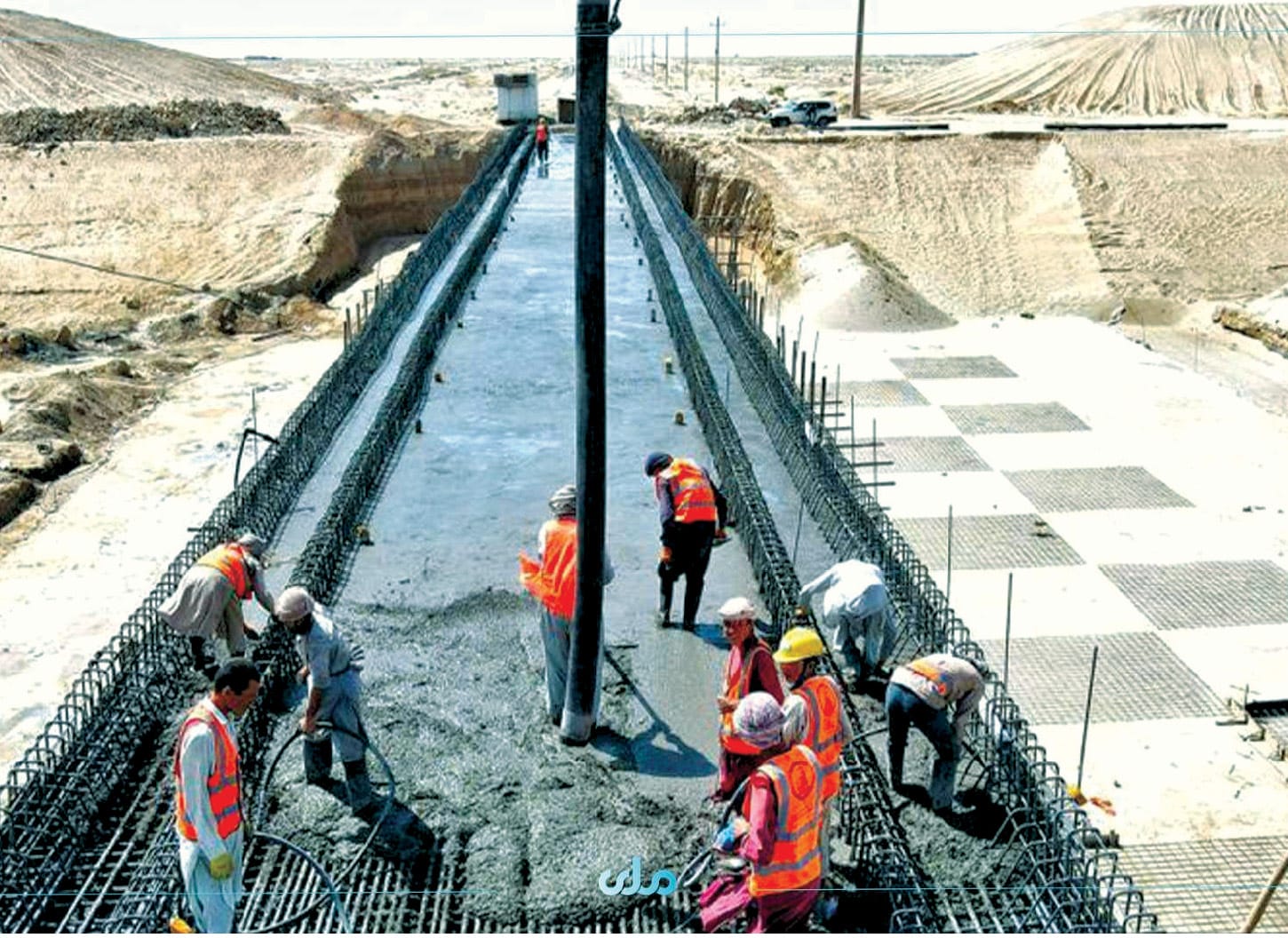
Kabul has extended support to the farmers now growing wheat and other crops, but far more is needed. With international support to the farmers—fertilizer, seeds, fuel, and cash aid for families—Afghanistan is on the way to reaching the 6.9 mmt a year of wheat required to be self-sufficient, even before the Qosh Tepa Canal is completed around 2028.
However, what is also sorely needed is a functioning market for food and other necessities. Over half the families in the country cannot afford to buy food, even when it is available. There are policies in place to build this market. It is also a priority to build up the food chain infrastructure—storage after harvest, processing, packaging, and transport. In addition to improving the desperately needed domestic food supplies, there are select initiatives for facilitating the export of Afghan specialty crops—nuts, dried fruits, pomegranates, melons and more. This involves a number of designated agro-complexes with an accompanying shipping capacity.
Electricity
The prerequisite for any success in food and all other sectors is energy, and in particular electricity. The situation is desperate. Afghanistan’s power sector is far below minimum, and electricity availability is far below requirements. Installed generating capacity is a minuscule 600 MW, the capacity of just one power plant in China or Kazakhstan. Per capita annual electricity consumption (2019) was 158 kilowatt hours in Afghanistan, which is nothing compared to at least 6,000 KWh per person annually in a modern economy.
All sectors of the economy are accordingly held back. In Herat, for example, the Chamber of Commerce reported this month that the production level at an important industrial park is declining drastically, due to the limited electricity.
Interim arrangements continue for electricity imports, while power projects are planned. These are top priorities for foreign as well as government investment. The Operation Ibn Sina recommendation is for work toward a goal of 25% coal-fired generation, 25% from natural gas, 23% from hydro-power, and 27% from nuclear power in the future.
Transportation
Transportation infrastructure likewise needs vast improvement. Of the 35,000 km of roadway in the country, some 18,000 km are paved. Work is underway on more, and so far, the 20 foremost cities have paved connections. An Afghan-Russian firm has rehabilitated the Salang Tunnel, built originally in the 1960s, to reliably allow north-south transit through mountains, especially connections with the capital, Kabul.
Remarkable work has been done to upgrade the Wakhan Corridor Road to the Chinese border. On Aug. 21, the Ministry of Rural Rehabilitation and Development said that the preliminary work has been completed on the final 50 km of the road, which involved excavation, construction and graveling. The project, which began last year, will improve the final stretch of the ancient Silk Road track through the Wakhan Corridor, which runs 500 km from the center of Badakshan Province in Faizabad, its capital, to China, through towering mountains. The prospects for trade, once a highway through the Wakhan Corridor is completed, are fabulous, and even more so with an eventual railway.
The aviation sector is also improving. Four of the several dozens of provincial and local airports now serve international flights.
Most exciting are the prospects for rail and interconnectivity throughout Eurasia. No integrated rail grid exists at all in Afghanistan, which has only a few hundred km of railway. But this can be changed if it’s prioritized.
The Trans-Afghan Railway is a national goal, for which various agreements have been signed among Uzbekistan, Afghanistan, and Pakistan, with the most recent being in July 2023. It will run 760 km from the Termez, Uzbekistan rail center, via Mazar-e-Sharif and Logar in Afghanistan, southeasterly through Kabul, into Pakistan, thence to the Arabian Sea, or northward throughout Asia.
Funding is the big hold-up, but prospects have brightened now that in June 2024, the China-Kyrgyzstan-Uzbekistan Railway construction consortium was announced by leaders of those three nations. A Chinese loan is reportedly in the works to cover nearly half of the $4.7 billion expected cost of this project. China-Afghanistan “pilot” trains have already gone this route, beginning in September 2022, crossing Kyrgyzstan by truck, until the railway is built. The connection proceeds across Uzbekistan, and into Afghanistan at Hairatan.

The International North-South Transport Corridor (INSTC) holds vast potential benefits to Afghanistan, situated in the lower hinterland of the 7,200 km long land corridor. The INSTC starts in northern Russia, crossing the Caspian Sea Basin, through to the Iranian port of Chabahar, thence to India, eastern Africa and afar. In February 2024, Kabul announced a package of $35 million in investment plans in the Chabahar Port. Besides benefits for agriculture and general cargo, the prospects are immense for developing the vast mineral wealth of Afghanistan. Iron ore deposits in central Afghanistan are regarded as the largest in Asia. On Aug. 16, Iran officials announced that the first shipment of minerals from Afghanistan was loaded on a ship bound for China. The 12 truckloads came from Nimruz Province.
Another rail initiative of great importance is the east-west route across northern Afghanistan, called the Five Nation Railway Corridor (FNRC), which includes China, Tajikistan, Kyrgyzstan, Afghanistan, and Iran. The 2000-km route goes from Iran in the west, where there already exists a 225-km cross-border link to Afghanistan as part of the Khaf-Herat railway. In April a train departed Afghanistan westward with coal bound for Türkiye. When the line is built eastward, it will cross into Tajikistan, then connect onward to Central Asia and China. On July 6, this year, President Xi Jinping met in Dushanbe, Tajikistan with President Emomali Rahmon, who said to the press afterward that they discussed “practical measures” for the road and rail routes of the “China-Tajikistan-Afghanistan” corridor.
There are also short but very important rail links between Afghanistan and Turkmenistan.
Labor and Industry
These all are elements that go into the needed transformation of the labor force and build-up of the manufacturing sector. At present, millions of people are unemployed, with many families living hand-to-mouth in the “informal” economy. There are an estimated 350,000 landless farmworkers in need of employment since the labor-intensive opium poppy cultivation had ended beginning with the 2022-2023 crop year.

The goal is to create jobs through the construction of infrastructure of all kinds, public works, mining, agriculture-support activity, and “soft” infrastructure for things like education, services, trade and so on. Key categories such as cement/concrete, steel, and machinery/machine tools should be synchronized as much as possible with “priority” categories of industry.
The government’s initiatives have targets for these categories, ranging from building the industrial zone of New Kabul City, to food processing and light industry, as well as heavy industry. As agricultural productivity increases, and work opportunities throughout the economy are created, millions will be productively employed.

The bar-chart graphic, Transforming Afghanistan’s Labor Force, shows the five-year period 2023-2028, indicating what can happen in Afghanistan in the coming years. The bar diagrams depict the labor force both increasing in number, and improving in the categories of productive work in which they are employed.
In brief, the goals in the transformation process are:
1. Triple employment in manufacturing from about 500,000 today to 1.5 million by 2028;
2. Create an additional 1.5 million new jobs in construction, especially of major infrastructure projects;
3. Productively employ another 3 million workers who are today unemployed or trapped in the minimally-productive informal sector of the economy.
This process requires education in all modes—from formal schooling, to exchange programs in other nations, to apprenticeships, and online training. Agricultural education is among the most urgently important, including management of crops, livestock, water and soils, machinery-training and more.
Vocational and professional training are a subset of overall cultural support and education. There are programs for building mosques, museums, archaeological work, historical sites, and more.
The first National Labor Conference, held July 23-24 in Kabul, was an occasion for discussing the many reports and practical plans for reducing poverty and unemployment, and creating opportunities for job growth. It brought together top ministerial leaders from the Emirate’s administration, along with persons from the private sector, universities, international organizations, and investors. Acting Minister of Industry and Commerce Nooruddin Azizi reported on a five-year plan to create more than 500,000 jobs. Other specifics included, for example, the report by Hedayatullah Badri, Acting Minister of Mines and Petroleum. He said, according to Tolo News: “Currently, the mining sector provides direct and indirect job opportunities for 40,000 people, and we are making final efforts to create investment opportunities for domestic and foreign investors.”
Health Care
The needs are fundamental, from ending hunger and malnutrition, to ending enteric sickness from lack of sanitation and safe water. There have been 57,000 official cholera cases the first six months of this year.
Foreign-sponsored programs to build hospitals and clinics, conduct drives for nutrition, inoculation, natal care and other purposes are very welcome, but the government is also seeking to build the national capacity for clinics, hospitals, staff and pharmaceutical manufacture.
Exemplifying the spirit of intervention, on July 8, 2024, the Ministry of Public Health launched a polio vaccination campaign in 23 provinces. The four-day campaign was designed to vaccinate nearly 8 million children under the age of five. In 2023, there were 6 positive polio cases in the nation, and Kabul is intent on eradication.
Governance, Trade, Diplomacy

This whole array of initiatives is in part possible so far, as a result of the improved functioning of the central government, in terms of security and reliability. Tax and customs collection are working; there is other government revenue, such as even the aviation fees for overflights over the nation’s airspace. With terribly short resources, Kabul is working to supply disaster relief, and ongoing humanitarian relief, in conjunction with international donations.
Foreign trade is increasing, despite the severe constraints of the Western sanctions. There are important instances of contact. Afghan diplomats and businessmen are participating in international trade fairs, including the major six-day exhibit in China the week of July 23. In late August, an Afghan-Kazakh Exhibition will be held in Almaty. Afghan traders have also participated in exhibits in Uzbekistan, Turkmenistan, and visited Iran.
On Aug. 21, the United Arab Emirates recognized an ambassador from Afghanistan, the second nation to do so after China in January this year. There are some 15 nations with active offices in Kabul for embassy functions. Though no nation has officially recognized the Taliban leadership in Kabul as the government of Afghanistan, there are fruitful unofficial and informal foreign relations ongoing with many nations. This is notable between Uzbekistan and Afghanistan, whose populations together approach 80 million, and are each far more populous than any other Central Asian nation. (Uzbekistan has 36.5 million people.)
Uzbek Prime Minister Abdulla Aripov visited Kabul on Aug. 17-18, in the first such high-level visit from Uzbekistan since before August 2021. It is reported that he signed $2.5 billion worth of agreements with the IEA in sectors including energy, agriculture and infrastructure. This took place at the time of the three-day trade exhibit of Uzbek businessmen in Kabul.
In July, an Afghan business delegation had meetings and exhibited goods in Tashkent. A joint Uzbek-Afghan Chamber of Commerce was formed at that time. Tashkent officials are conferring with Kabul on the Qosh Tepa Canal, given that the two countries share the flow of the Amu Darya River, along with other Central Asian neighbors. There is a common interest in high-efficiency water-saving agriculture methods here, and throughout Afghanistan, such as drip irrigation.
There are other notable instances of foreign relations. On June 24, a delegation from BRICS member South Africa met in Kabul with acting Deputy Prime Minister for Foreign Affairs Mullah Abdul Ghani Baradar, to discuss both investment in the mining sector of Afghanistan, and also, to make a pledge to build a well-equipped health center in the nation.
III. Operation Ibn Sina: The Coming Afghan Economic Miracle
An overview of the situation and perspectives for the development of the Afghan national economy were dramatically expressed in the conference, “Operation Ibn Sina: The Coming Afghan Economic Miracle,” held in Kabul last November. Along with plenaries on the first and third days, there was a remarkable program of nine simultaneous workshops on the second day, to concretely address economic sectors: agriculture and water infrastructure, health care, energy, education, transportation, credit and national banking, industry and labor, cultural heritage, and urban development. A Schiller Institute team joined with other Afghan and international experts.

At the opening plenary, Acting Deputy Foreign Minister for Political Affairs Sher Mohammad Abbas Stanekzai addressed the conference strongly: “We are committed to self-reliance, as well as open to collaboration with all neighboring nations and peoples.” He said that, after 40 years of war and destruction imposed upon their nation, Afghans are now committed to building up their homeland. Minister Stanekzai said, “We are working shoulder to shoulder to see this happen.”
He called upon Afghans living abroad “to return home and rebuild their country” with their resources, education and ingenuity. He spoke movingly of how “the doors are open” to all, open for “all brothers and sisters.” Stanekzai said, “Despite facing financial constraints, we ardently strive to actualize ambitious plans such as the Qosh Tepa Canal project in northern Afghanistan. We extend an invitation to both domestic and foreign investors, whether Afghan or non-Afghan, to invest in Afghanistan….”

Also at the opening plenary, Schiller Institute leader and founder Helga Zepp-LaRouche said in a video message, “Afghanistan has enormous wealth of natural resources which can be the basis to build up a flourishing economy, creating a middle-class country in a relatively short period of time, providing a decent living standard for the entire population, provided the right economic method is being implemented.” Zepp-LaRouche, since October 2021, has called for an “Operation Ibn Sina” for development. Zepp-LaRouche had made reference in Fall 2021 to Ibn Sina, who, as a great historical philosopher and physician, whose family was from the northern Afghanistan-Uzbekistan region, gives hope for a bright future.
At the closing plenary, prominent Afghan businessman Fareed Alokozay called on those at the conference and at large to act on “the opportunity to be self-sufficient.” It is a mission.
Among many points, he said that the nation needs the ability to import what it chooses to, and to export likewise. He spoke of his nation having the assets of youth, of its business companies, and other means, to succeed. He exhorted everyone to give time to the Emirate to complete the nation’s priority projects. In sum, Alokozay said, “The conference ends today, but tomorrow is an action day.”


